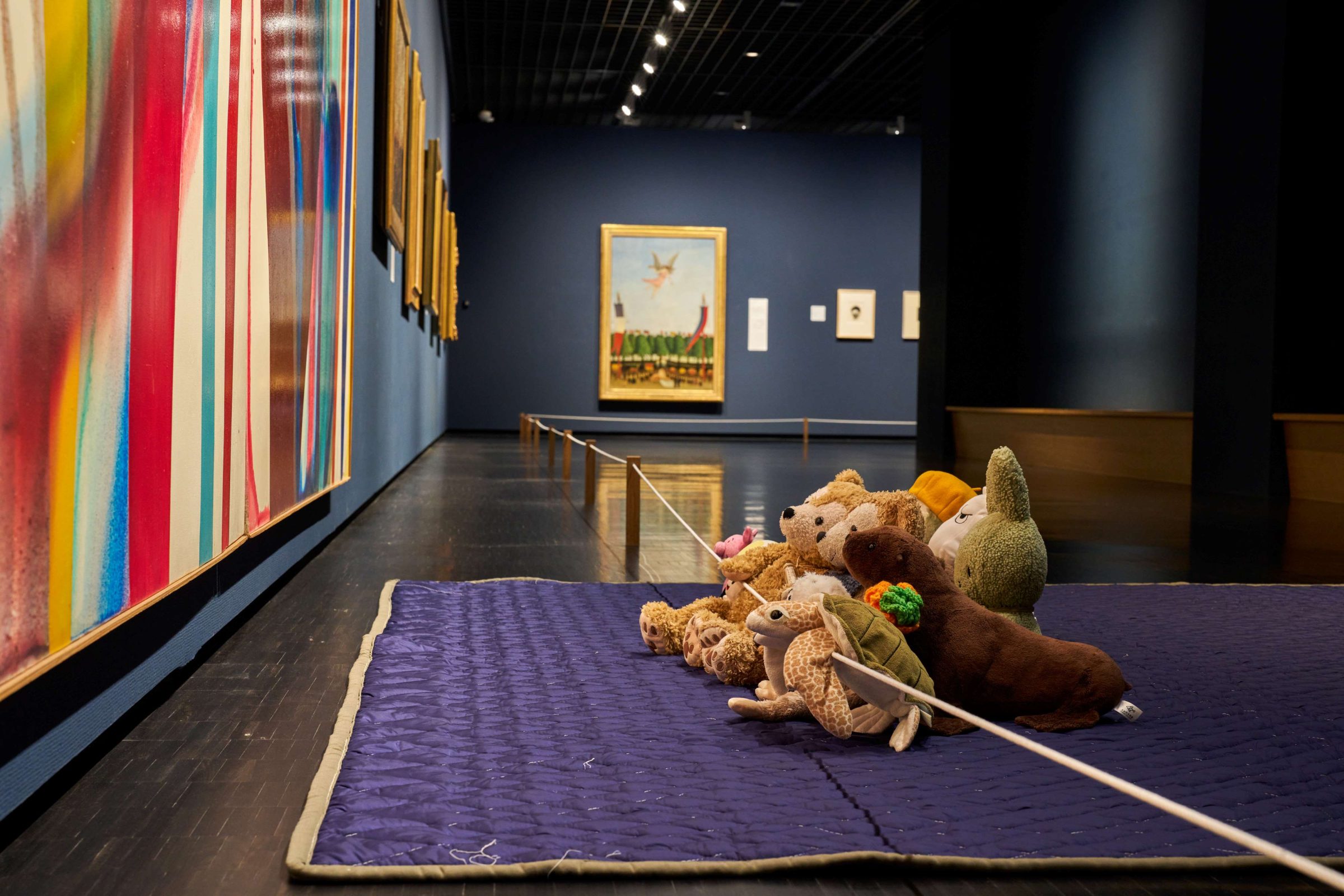Reports
May 20, 2025
2024 Event Report: Stuffed Animal Sleepover
Index
The National Museum of Modern Art, Tokyo, home to one of Japan’s largest collections of Japanese art from the end of the 19th century to the present day, held a Stuffed Animal Sleepover as part of their Family Day program aimed at helping children engage with art.
This time, it wasn’t the children who gathered at the museum, but their beloved stuffed animals. By photographing the stuffed animals exploring the galleries and rest areas, the museum offered children a special way to experience the joy of visiting. The photo session took place on Tuesday, November 5th, a day when the museum was closed to the public, with 17 stuffed animals taking part.
Stuffed Animals Visit the Museum!
The National Museum of Modern Art, Tokyo is located just across the bridge from Takebashi Station, overlooking the moat of the Imperial Palace. The stuffed animal participants lined up on the second-floor terrace, looking out at the view like little visitors.
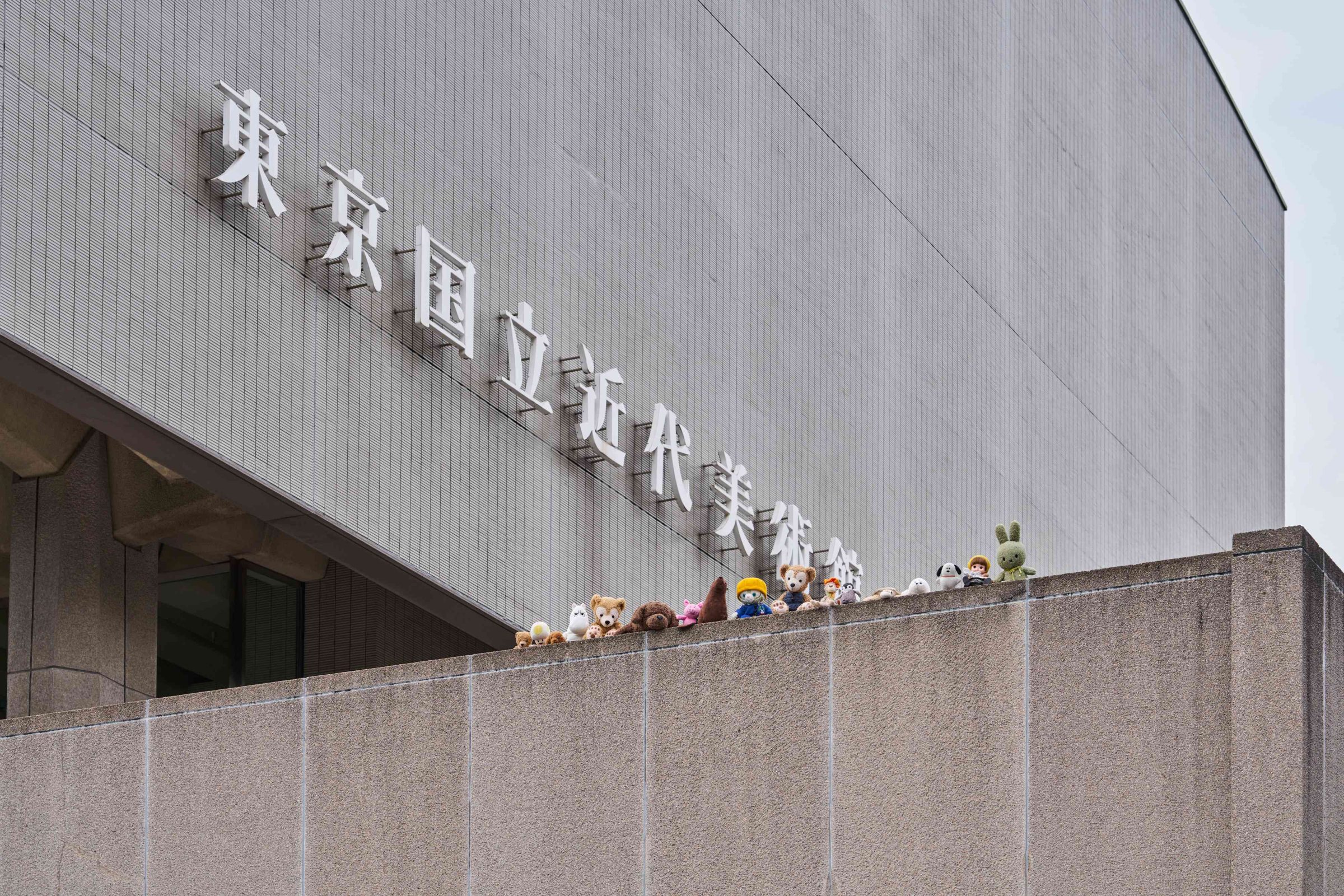
The group included all kinds of animals and characters, from those small enough to fit in the palm of your hand to ones that needed both arms to carry. Some even wore what looked like handmade clothes and hats. The stuffed animals, who belonged to children of junior high school age and younger chosen by lottery, had gathered at the museum by the day before. Now, on the museum’s closed day, their special art viewing session was about to begin. In the MOMAT Collection exhibition galleries, their first encounter was with a painting by French artist Henri Rousseau.
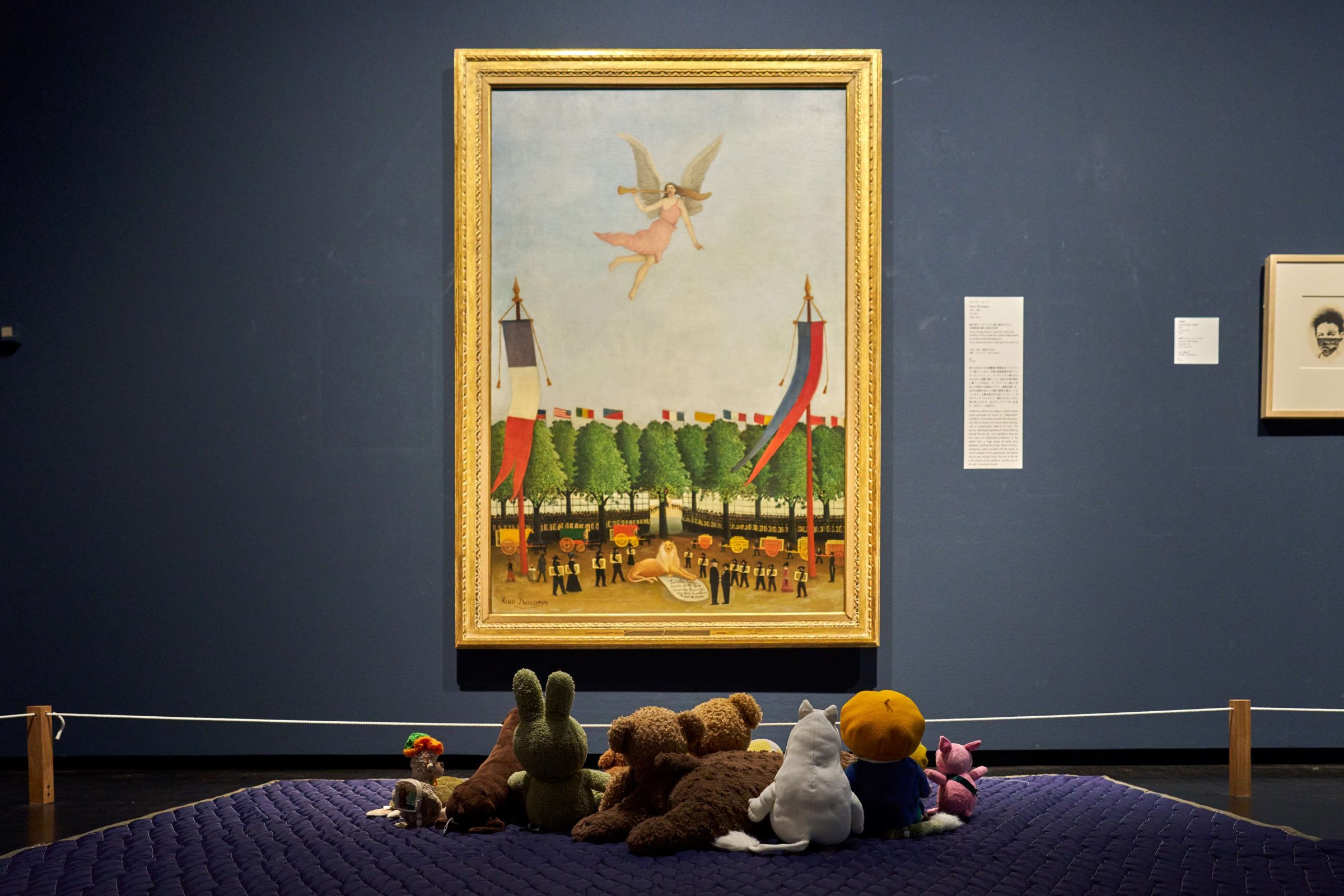
The top of the painting shows a goddess flying freely in the blue sky. But from the stuffed animals’ lower viewpoint, the people gathered in the bottom half of the painting might have been more visible. Imagining what the stuffed animals might be seeing helps open up new ways of looking at the artwork. The mats beneath the stuffed animals were actually the same ones usually used to protect artworks. Even the special cart used for moving paintings became a ride for the stuffed animals to tour the galleries. Spotting these behind-the-scenes museum tools in the photos was part of what made this sleepover special.
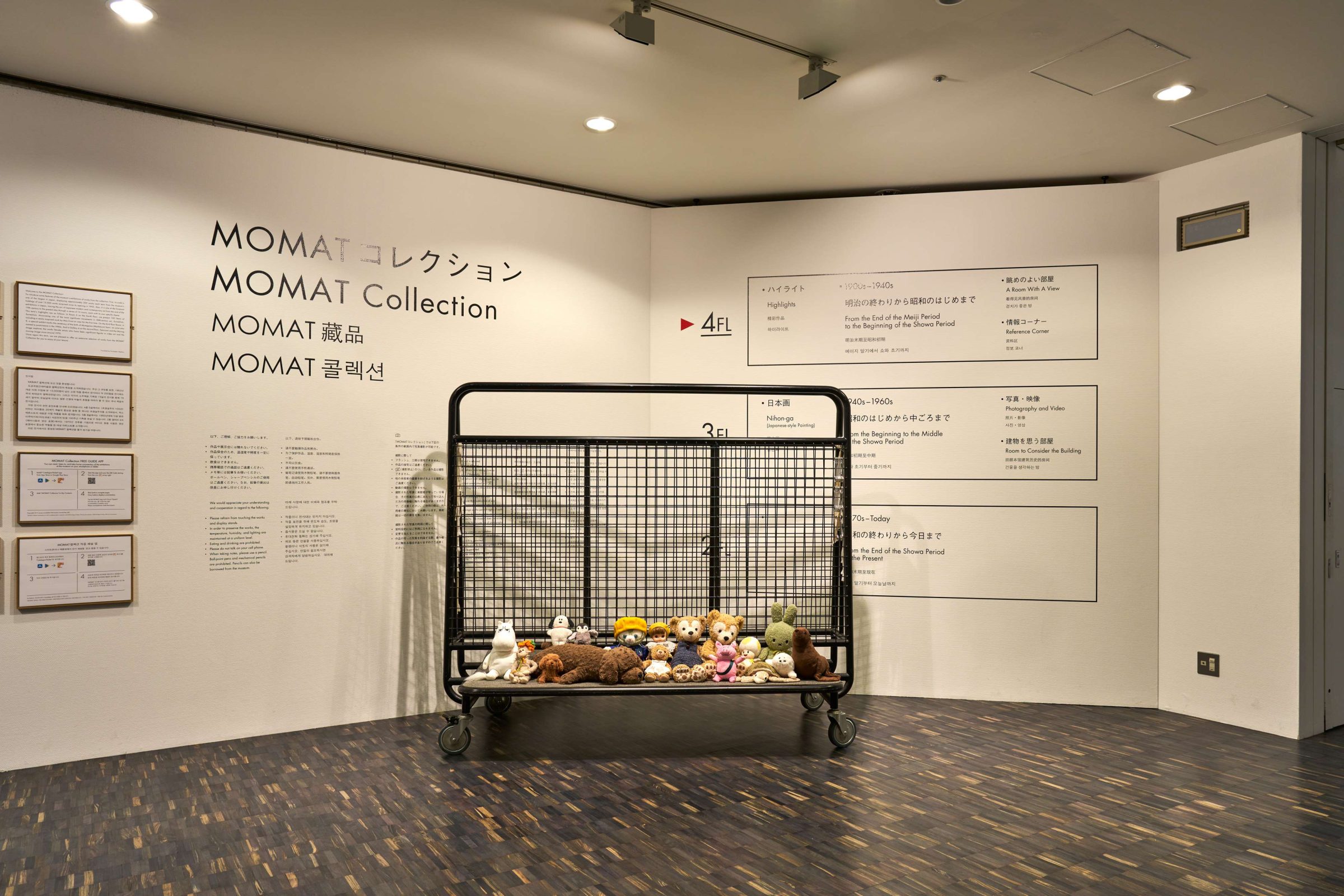
Different Artworks, Different Perspectives
The National Museum of Modern Art, Tokyo’s collection includes around 13,000 works spanning paintings, prints, sculptures, photographs, videos, and installations. The MOMAT Collection exhibition displays about 200 pieces at a time, arranged around changing themes. Touring the 12 galleries from the fourth to second floors, visitors can experience the flow of Japanese art from the end of the 19th century to the present.
Next was the gallery featuring works from Japan’s Meiji era (1868–1912). With chairs arranged in a circle around the artwork, it looked as if the stuffed animals were having their own little discussion group about the art.
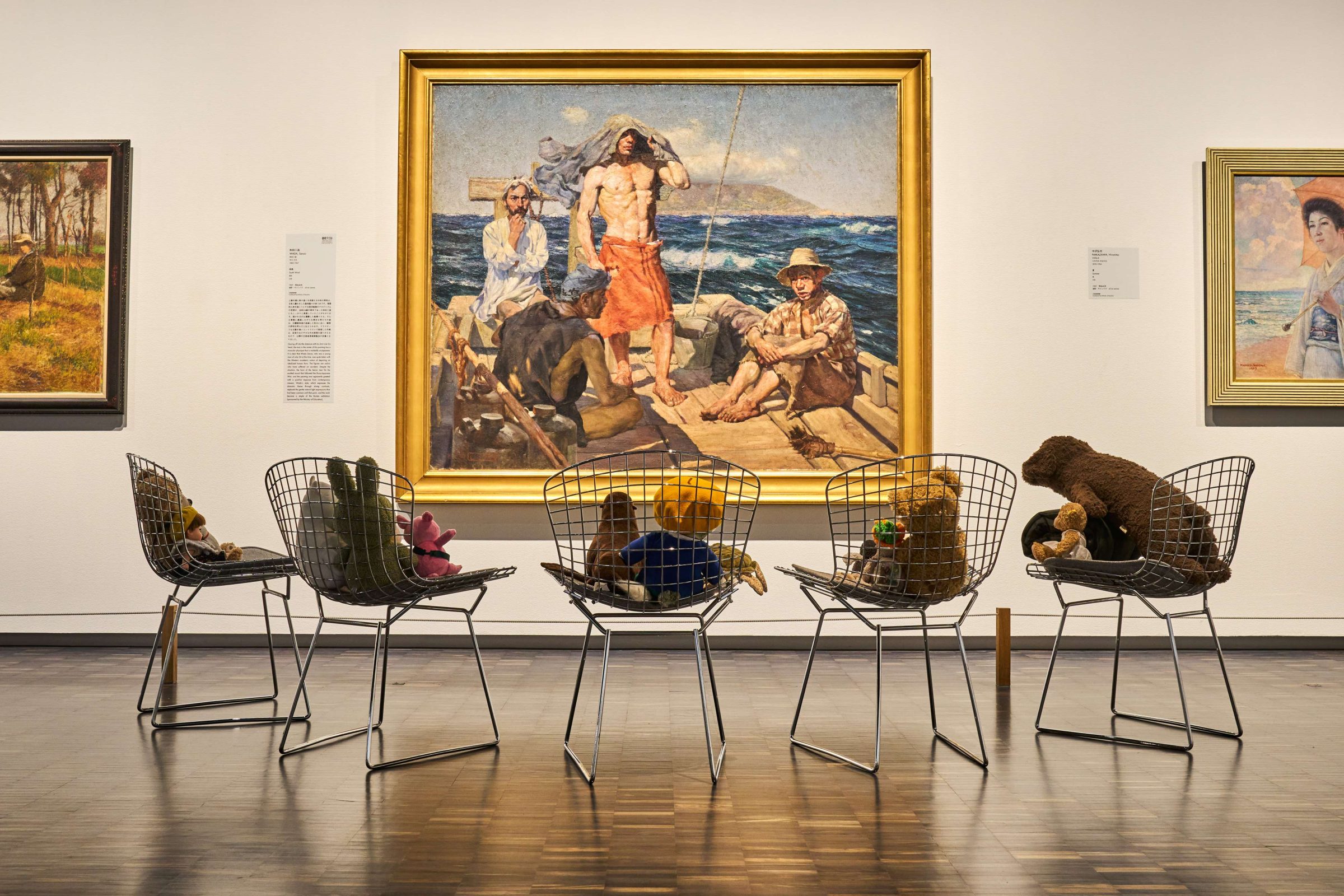
When looking at art, you can do more than just stand close to examine the details of paintings and sculptures—sometimes it’s nice to sit back and take in the whole space. The chairs provided for this purpose often reflect each museum’s unique character. The National Museum of Modern Art, Tokyo’s galleries feature designer chairs from Japan and abroad. There’s even a space where you can relax on tatami mats like in a traditional Japanese room while viewing Japanese paintings.
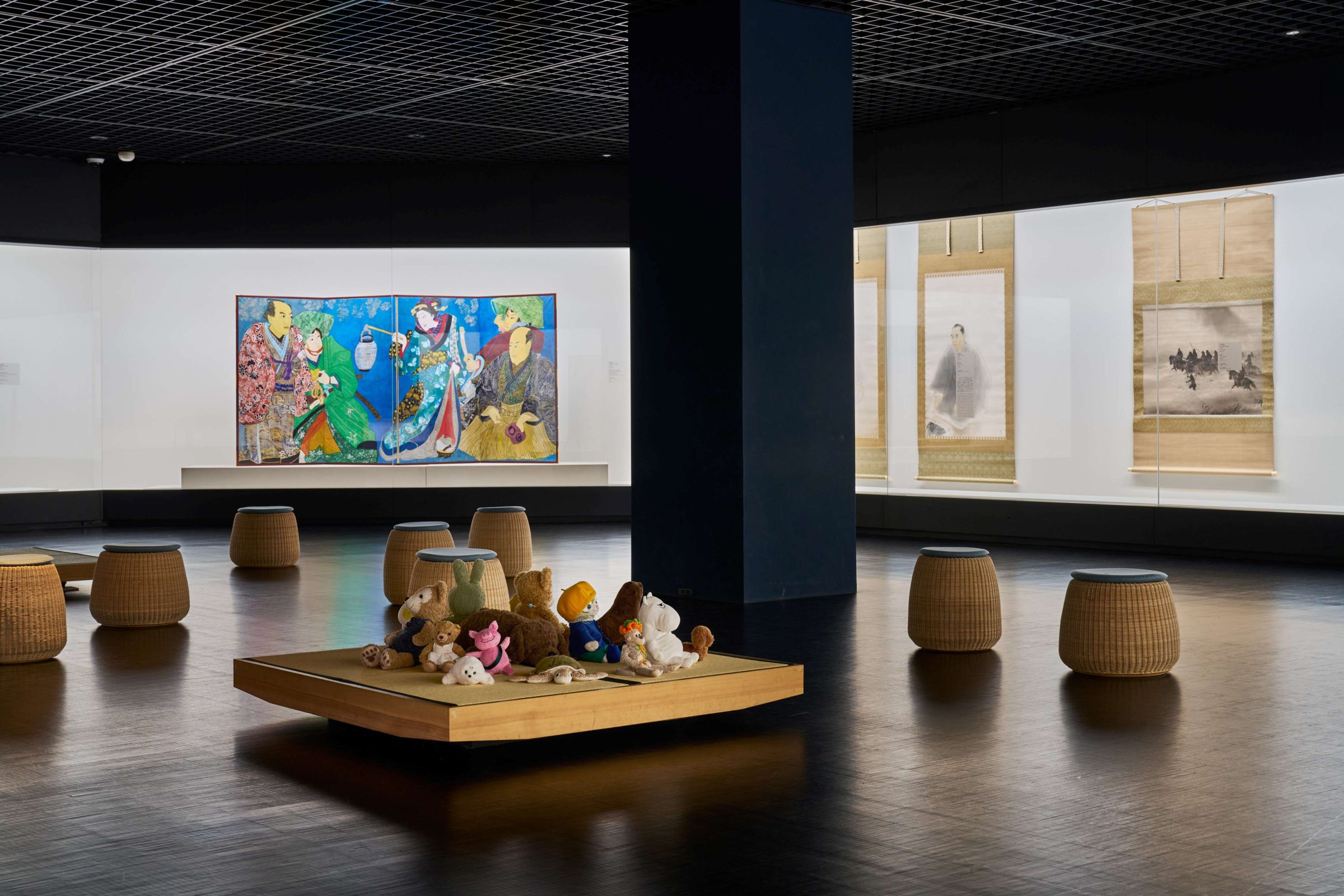
After the stuffed animals spent half a day enjoying the museum, their owners received digital photos showing both group shots of different scenes and individual portraits with specific artworks. Later, each owner also received a 24-page photo book of their stuffed animal’s adventure. Having a printed book in addition to digital photos meant even young children could flip through the pages and enjoy the experience on their own. According to the survey responses, even children who were initially worried about leaving their precious stuffed animals were delighted when they saw the photos, saying things like “Look how much fun you had!”
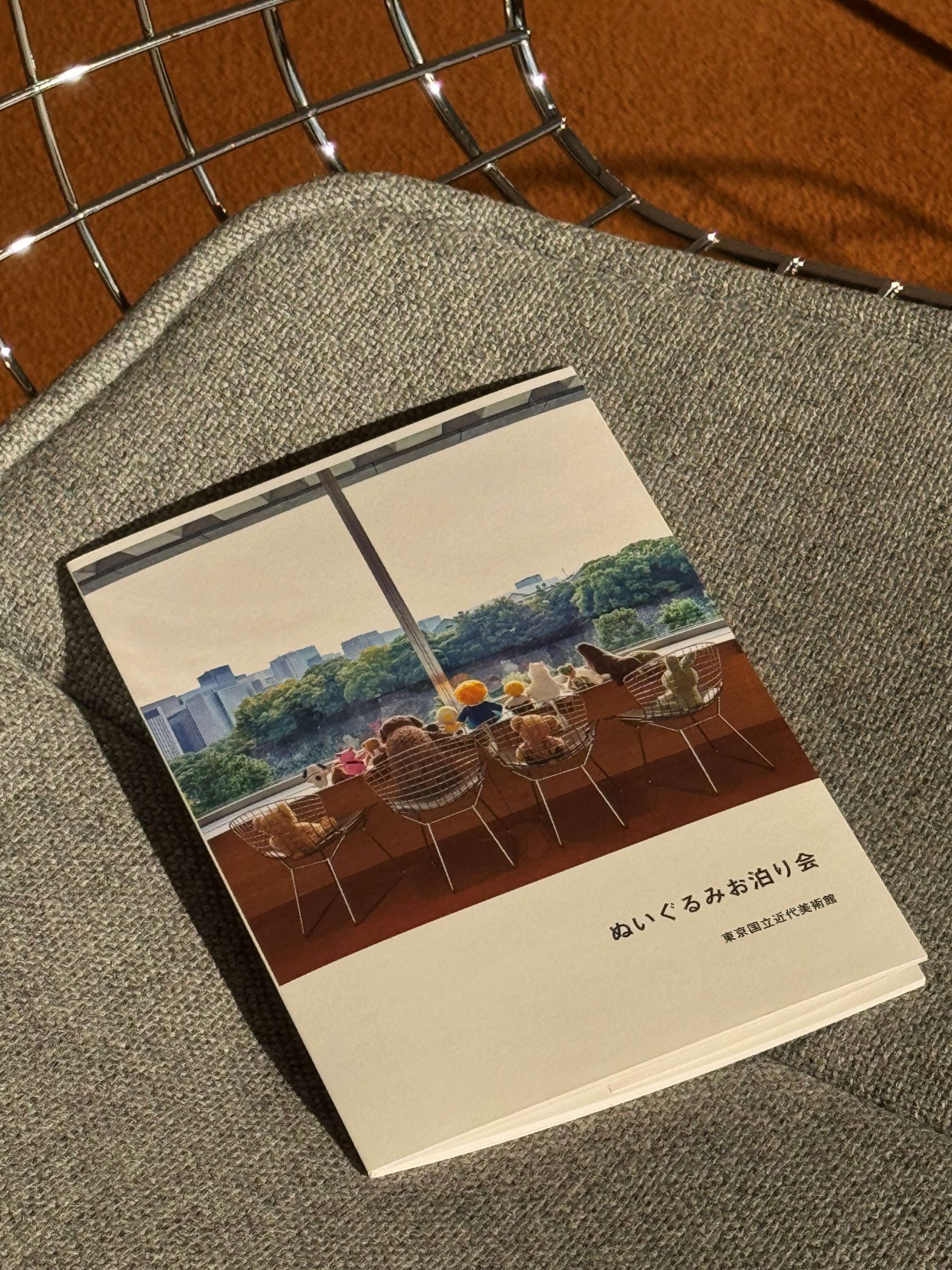
Seeing their fluffy companions having a special adventure in the unfamiliar setting of the museum created a sense of wonder that sparked children’s interest and curiosity. Some children expressed that they wanted to go see the paintings their stuffed animals had, or wanted to look at the art from the same spots. These responses showed how the sleepover could inspire children to visit the museum themselves.
How to Create a Museum Stuffed Animal Sleepover
The stuffed animal sleepover concept is said to have originated in American libraries. While it has become popular in Japanese public libraries over the past decade, there haven’t been many reports of museums hosting such events. This was the first event of its kind for The National Museum of Modern Art, Tokyo, and it drew around 3,000 applications for just 20 spots. Participants expressed hope for more events like this in the future, showing great potential for the program’s development.
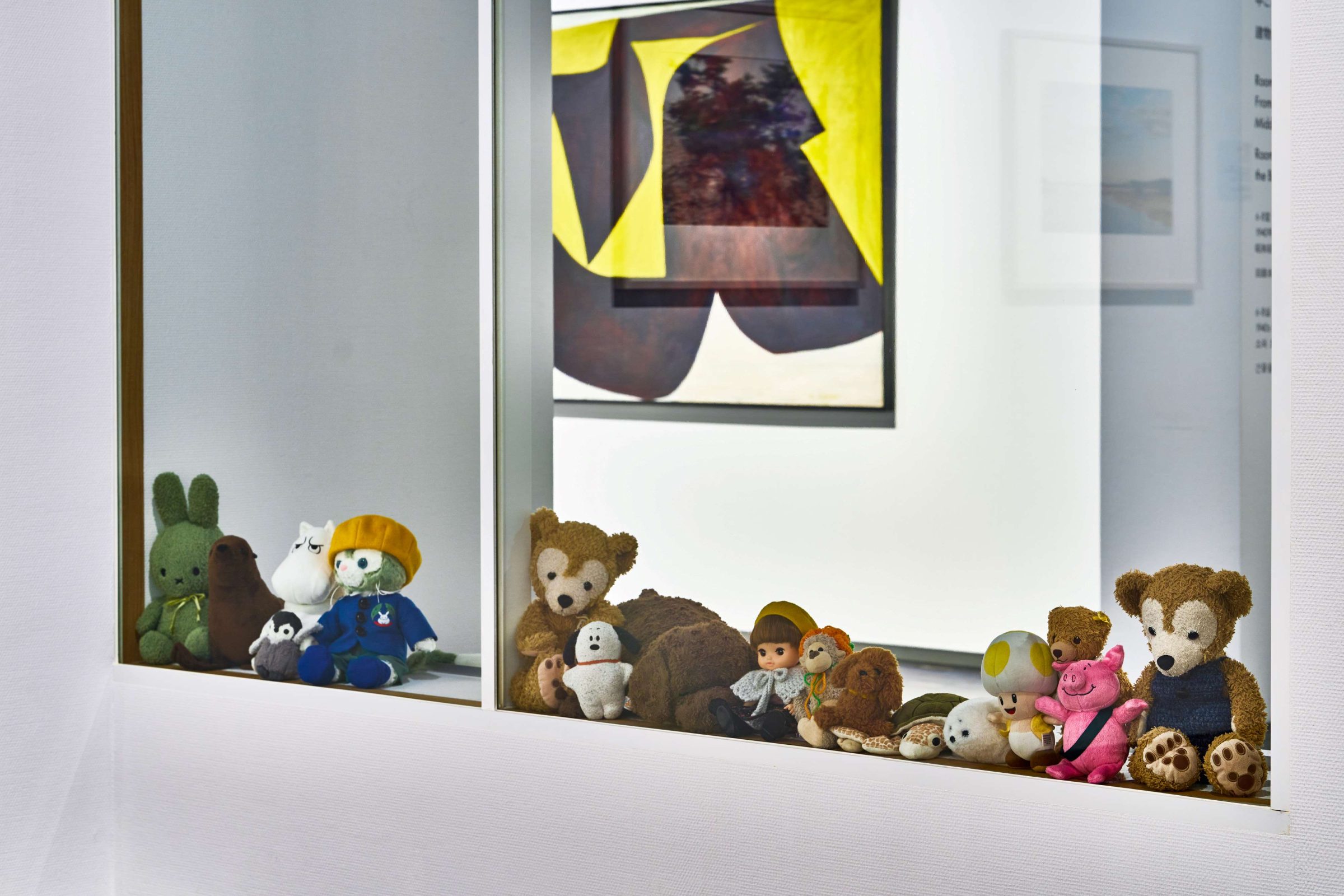
“The stuffed animal sleepover offers a direct way to experience the joy of museums,” explains curator Hajime Nariai, who planned the event. Most children’s events at museums must consider various constraints, such as ensuring the safety of both artworks and participants, and accounting for children’s attention spans. While having stuffed animals visit in place of children might seem indirect at first, this approach actually allowed the museum to focus purely on the joy of viewing art, with fewer safety concerns than in-person events. The program was developed based on this idea.
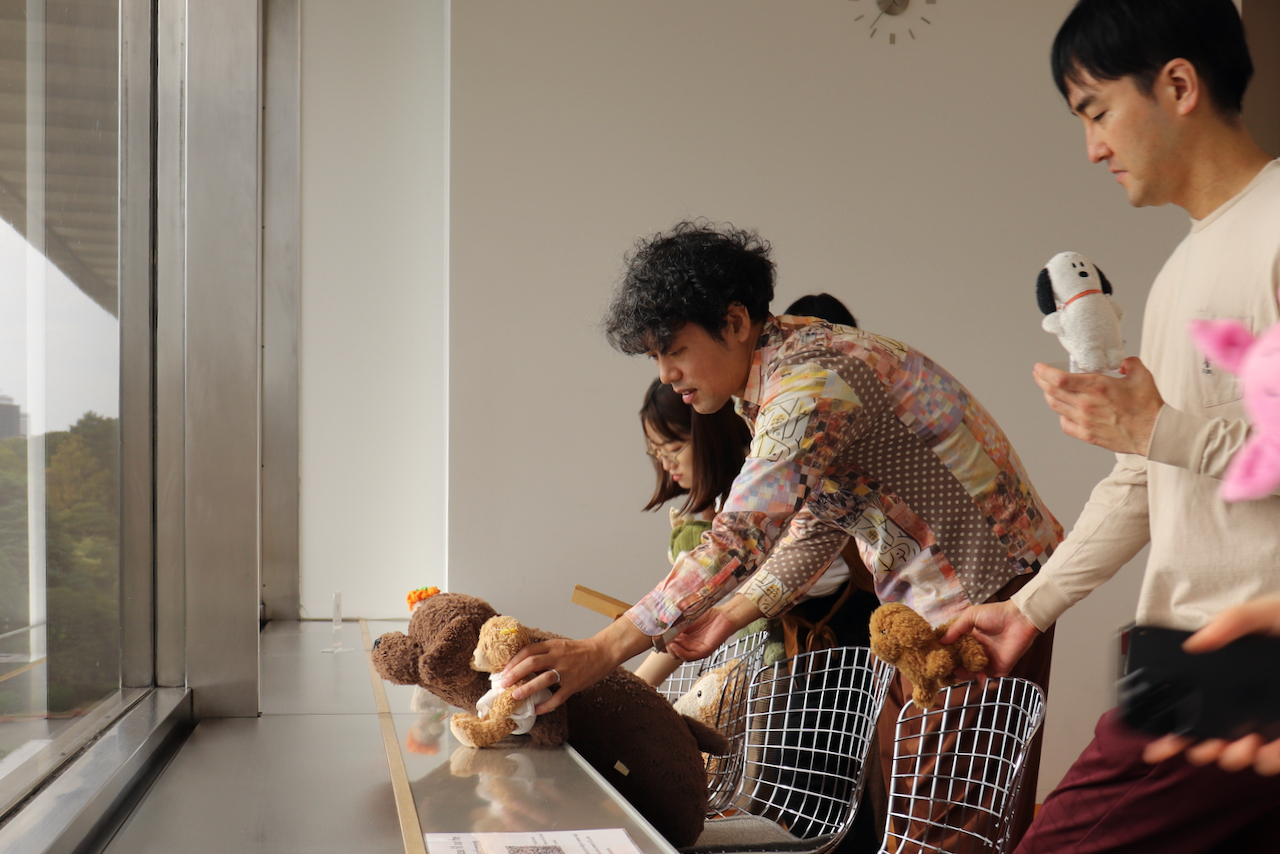
When taking photos, care was taken to capture not just the stuffed animals, but also the appeal of the artworks and gallery spaces. Another advantage of using stuffed animals was that they could get closer to the artworks than human visitors normally could. Beyond arranging the stuffed animals to face the artworks, no special poses or storylines were created. This allowed viewers to imagine for themselves how the stuffed animals might be experiencing the art.
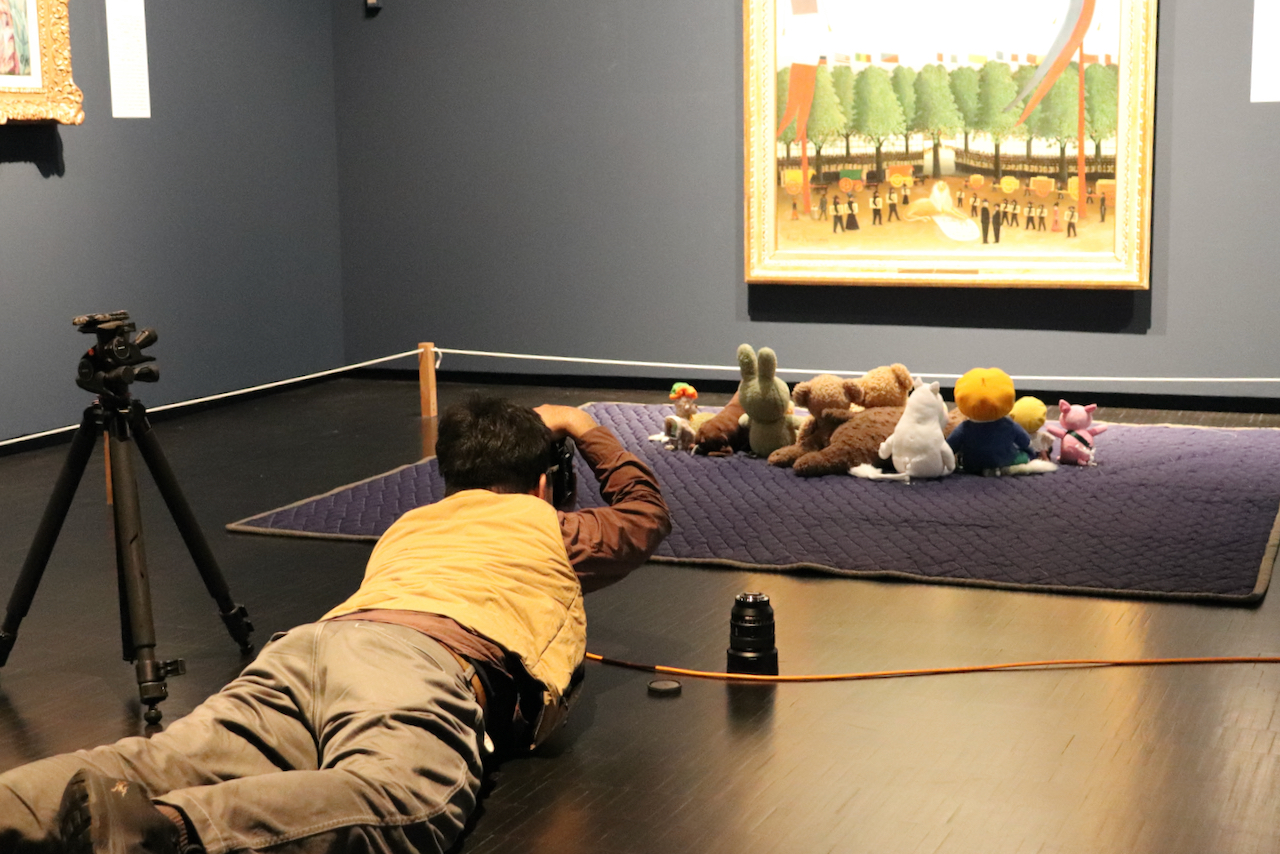
Even creating simple viewing scenes had its challenges—different sizes and the way their heads were positioned made it tricky to get all the stuffed animals looking at the artwork or standing properly. Sometimes the staff used stands or had them lean on each other’s shoulders to get the perfect arrangement. Some children, seeing their stuffed animals cuddled together in photos, were delighted they had made new friends at the museum.
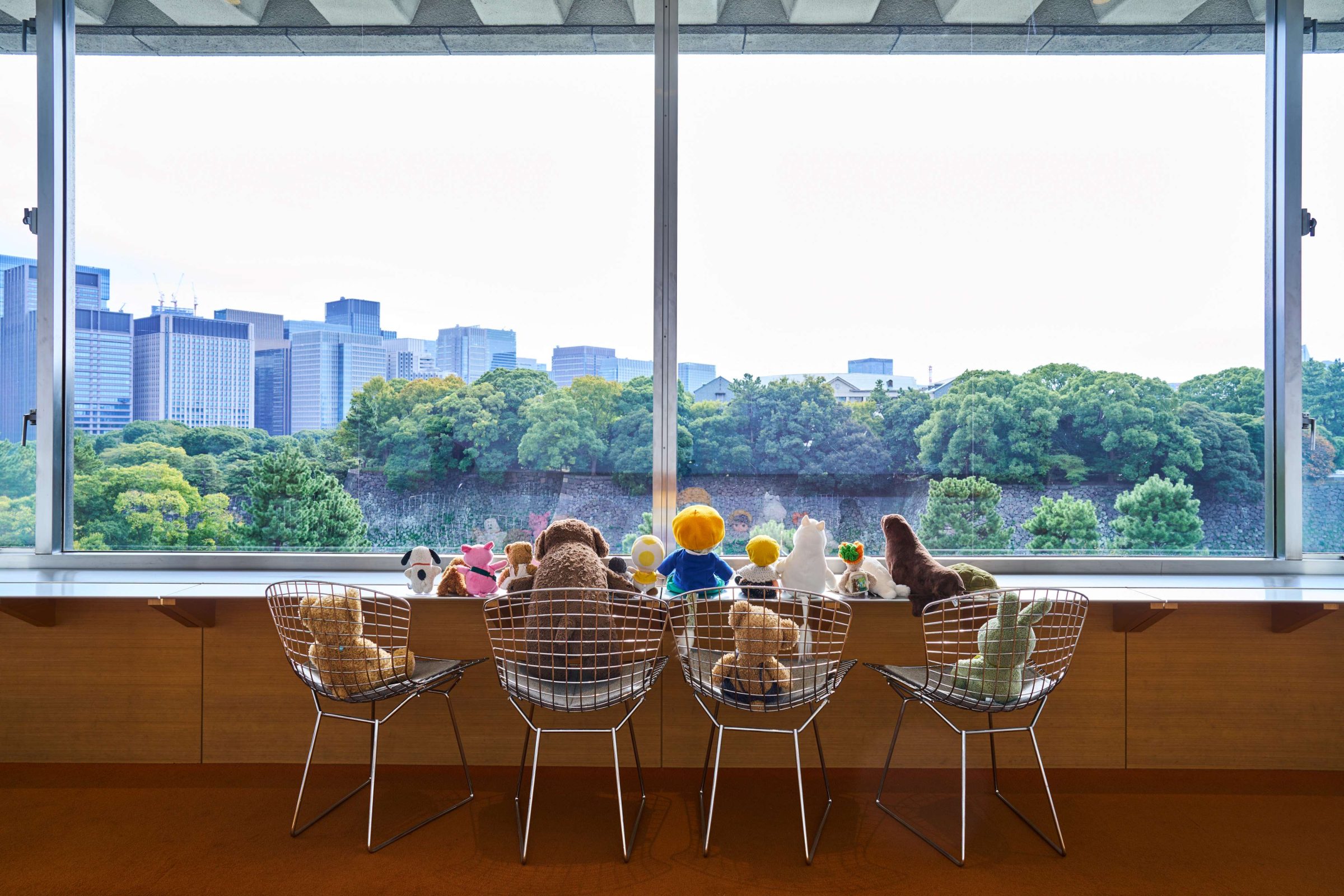
The museum staff, curators, and interns were initially quite careful with the stuffed animals, but as the photo session went on, they began to have fun imagining each one’s personality and discussing where to place them, saying things like, “This one might prefer this artwork” or “Look how intently they’re gazing at the Imperial Palace stone walls through the window!” Stuffed animals have a way of drawing empathy even from adults meeting them for the first time. It’s easy to see why they make perfect guides for inviting the children who cherish them to explore museums.
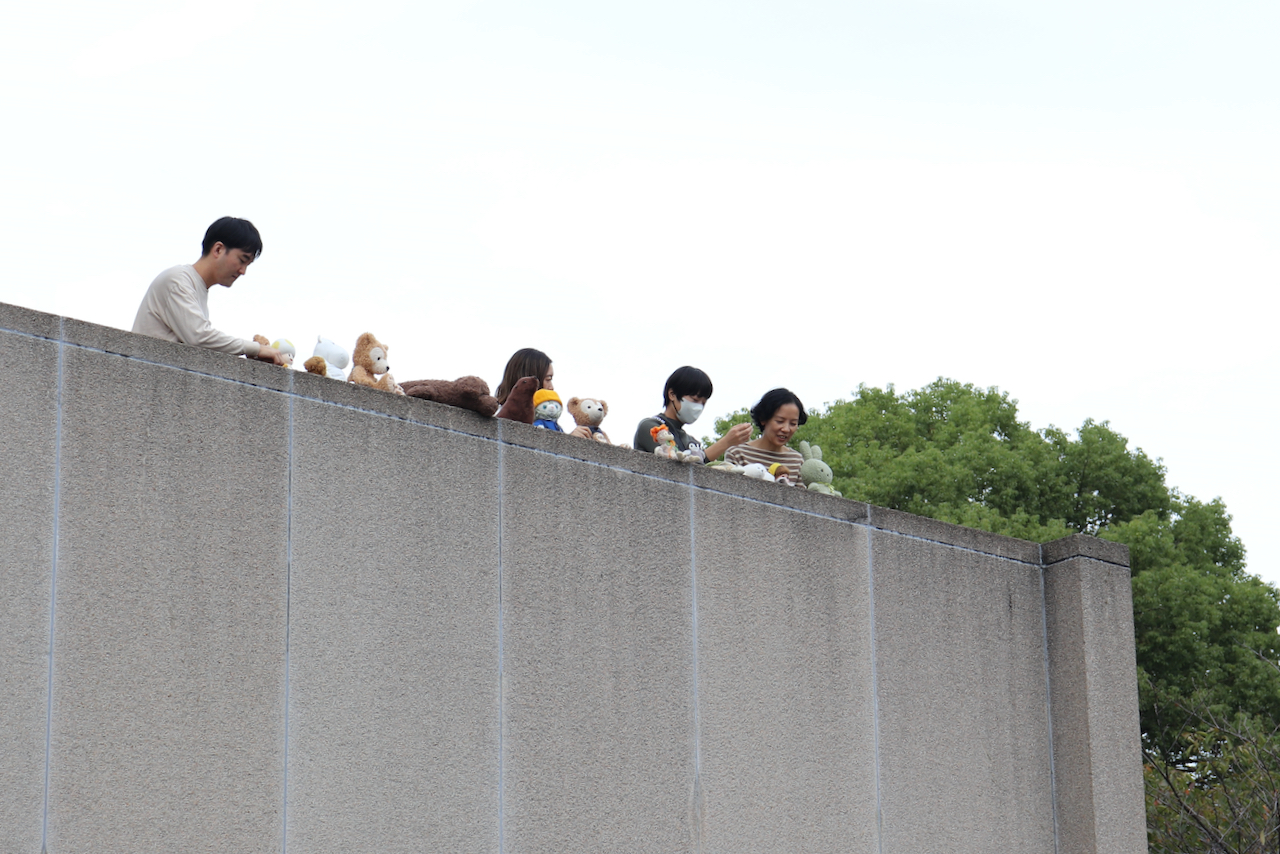
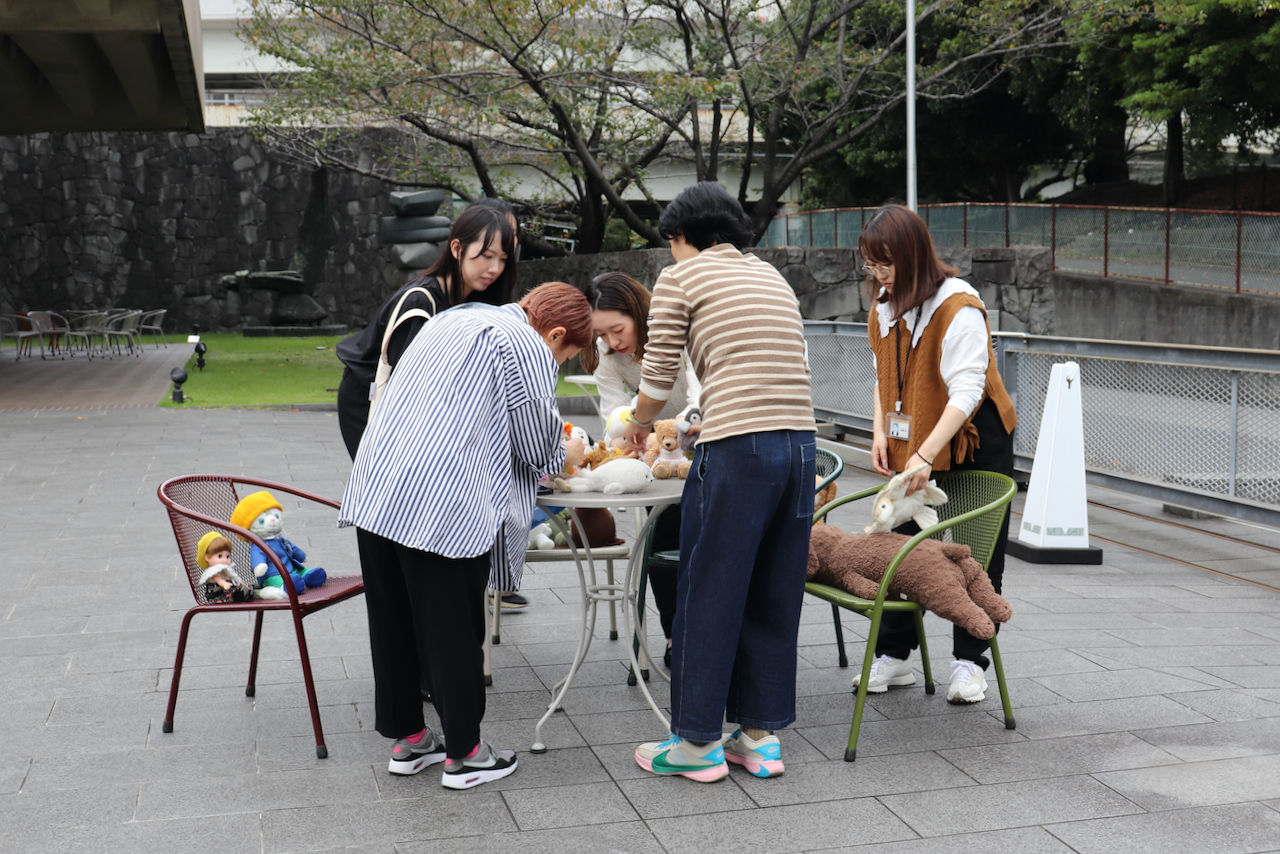
While museum stuffed animal sleepovers are simple to prepare and run, they can be adapted in various ways to reflect each museum’s unique character and local flavor. As more museums adopt this program, it could open up opportunities for art appreciation to many children, including those who weren’t able to participate this time.
Date of interview: November 5, 2024
Editing: Yukako Takahashi
Photo: Nagai Fumihito
*Excluding photo “※”
